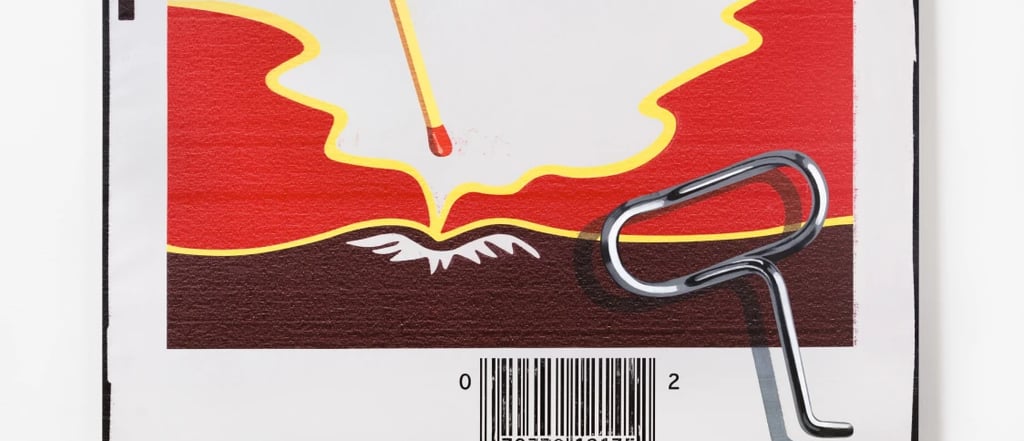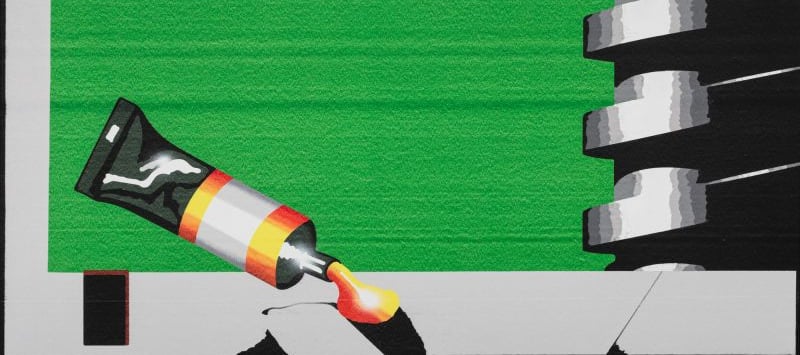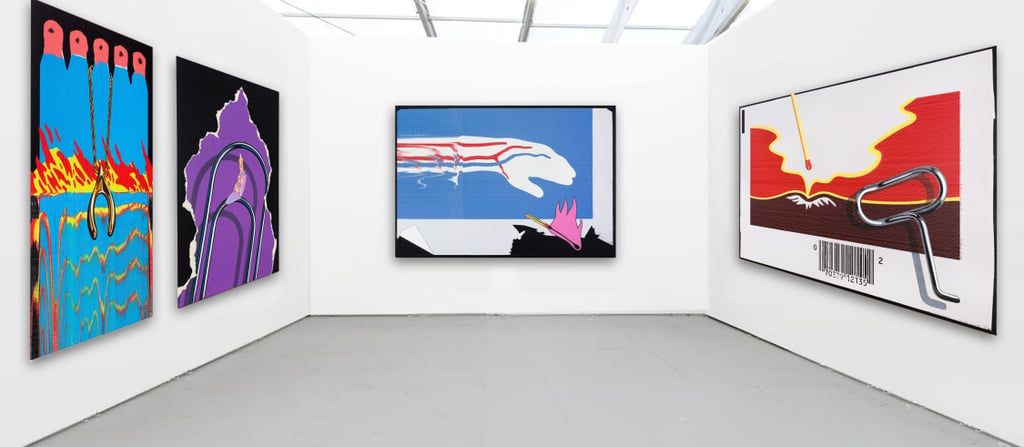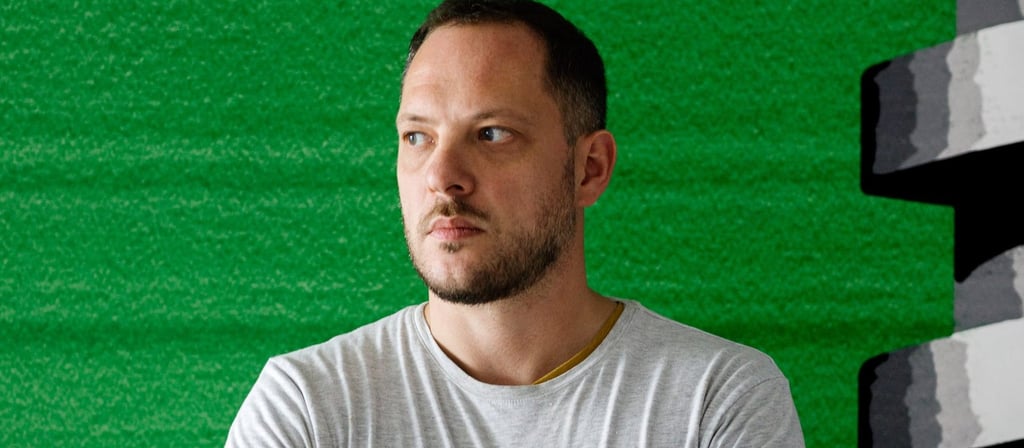Róbert Batykó
A painter bridging digital ephemera and analog presence—where scraps of image culture become haunting visual archaeology.


A Life Between Brush and Byte
Róbert Batykó was born in 1981 in Miskolc and established himself as one of Hungary’s most distinctive artists rising from the mid‑2000s generation. He earned his Master’s in Painting from the Hungarian University of Fine Arts in Budapest under the mentorship of Károly Klimó, followed by a Doctor of Liberal Arts degree in Pécs. From the beginning, Batykó explored how digital image culture collides with traditional painting methods. His work surfaces as a conversation between analogue brushwork and the detritus of consumerism—vector illustrations, packaging, found objects—refined into monumental canvases. He developed his own scraping machine combining press and blade, enabling him to lay on paint and then remove it, in a controlled yet unpredictable gesture that leaves behind ultra-thin, layered surfaces. These processes reflect an acute awareness of image formation, memory, and technological residue—making each painting a visual autobiography of image culture and analog resistance.
Over the years, his works have become emblematic of a post-digital aesthetic: meticulous in tone yet enigmatic in form, simultaneously precise and obscured. Batykó’s oeuvre is deeply philosophical, balancing presence and absence. He decontextualizes familiar imagery from vector guides or packaging, reconstructing them into landscapes of found memory and abstraction. His figures seem almost anthropomorphic—masked, one-eyed, floating beyond spatial or temporal bounds. He challenges the viewer’s expectation of figuration, using roots in Pop Art and photorealism, but ultimately delivering paintings laden with sensory chaos and conceptual subtlety. His inclusion in the collections of the Hungarian National Gallery and Ludwig Museum underscores his cultural and institutional recognition, while his residency in the Netherlands expanded his light- and site-based sensibility across cross-cultural palettes and creative structures.
Exhibition History and Institutional Engagement
Since his first solo shows in the late 2000s, Batykó has become a fixture in Hungary’s major institutions—exhibiting at acb Gallery in Budapest, Ludwig Museum, Hungarian National Gallery, and MODEM in Debrecen. His solo exhibition Red Eye at acb Gallery in early 2019 confirmed a pivotal shift in his oeuvre: from digital abstraction toward a poetics of scrap, retina fatigue, and anthropomorphic vector forms. Reviewers noted the poetic renderings of technological distortion, and the exhibition marked a turning point in his post‑digital narrative. In 2022 he participated in the MODEM group show New Mediations alongside other Generation Y Hungarian artists, where his consumer-culture collages gained particular attention. His works appear in European art fairs and retrospectives, establishing him as both critic of visual consumption and creator of visual archaeology.
Themes and Artistic Vision: Memory, Consumption, and the Post-Digital Real
Batykó’s paintings carry existential complexity wrapped in visual references to everyday consumption and digital culture. He transforms vector diagrams, packaging, and found prints into portraits of discarded experience—objects that evoke stories of use, displacement, and erasure. Batykó’s paintings often include anthropomorphic figures—one-eyed cyclops forms or mask-like silhouettes—suggesting fragmented identity in the digital age. The presence of consumer waste becomes political: litter becomes testimony to mass production, abandonment, and environmental disregard. Yet, the surfaces remain sensually compelling: dripping paint, powdery smears, opaque layers. Through the intersection of eye fatigue (red eye), digital screen glow, and mechanical abrasion, he creates paintings that are both critique and seduction—magnetic surfaces that reveal decay, memory, and digital shadow.
Latest Exhibitions
In 2025, Róbert Batykó’s acclaimed solo exhibition “Replay” at acb Gallery in Budapest opened in January and ran through February, showcasing the latest series of oil paintings and collage works. This exhibition emphasized his continued dialogue between digital form and painterly disruption, featuring large-scale canvases filled with abstract shapes, scraped surfaces, and heightened color palettes. In March–April 2024, his significant show “Image Trap” was also presented at acb Gallery, exploring vector illustrations decontextualized into painterly figures. In 2023, he participated in the Ludwig Museum’s “Y Profile: Young Artists from the Central Bank Collection” exhibition in Budapest (March–April 2025), presenting select paintings alongside other emerging Hungarian artists. Internationally, he returned to the Netherlands for a guest studio residency in Haarlem in late 2023, debuting new works at Art Rotterdam in early 2024 under the title “The Synthesis of the Digital and the Analog”, where he exhibited oil paintings and collages made with his scraping machine. These exhibitions collectively mark a consistent deepening of his conceptual approach and secured his position as a leading post‑digital painter.
Official Links
Explore Róbert Batykó’s full catalogue of works, résumé, technical book on his scraping machine, and detailed project descriptions at his official website: https://www.robertbatyko.com/
Stay updated on exhibitions, process videos, and studio insights via his social media platforms:
Instagram: @robertbatyko_art (followed via his official site)


Poetics of Debris: Objects, Shadows and the Technological Subconscious
Batykó’s signature works explore litter, discarded packaging, and fragments of urban life as painting subjects. He elevates refuse into alien landscapes—enlarged apple cores, transit tickets, open vector drawings—becoming spectral still lives hovering in cosmic emptiness. Through applied scraping and smearing, he creates palimpsest-like surfaces where debris both emerges and dissolves. The pieces evoke a “technological subconscious”, where digital detritus reveals societal consumption patterns and visual overstimulation. In works like Shadows of Painting, he integrates cast shadows—uncommon in his early paintings—to emphasize the duality of presence and disappearance. The shadows sometimes form human silhouettes, self-referential signs of artistic presence, or traces of human agency overshadowed by digital noise. These shadowed forms dialogue with Plato's cave allegory and Baudrillardian simulacra: the real, the representation, and the void behind the image. Batykó thus repositions old genres—still life, abstraction, found-object portraiture—into a poetic critique of post-image society, where painterly sensuality meets conceptual theory.
The Painting Machine: Chance, Control, and Mechanical Gesture
A pivotal part of Batykó’s practice is his self-built scraping mechanism which mechanically removes layers of paint at the final stage. This machine symbolizes his embrace of partial control and acceptances of serendipity. After meticulously painting over vector-based forms and found-image origins, he activates the machine and lets paint strip away. The result is unpredictable surfaces—scratched, smeared, and attenuated—revealing underlying layers like archaeological strata. The physicality of gesture intersects with digital delicacy: the tactile violence of the blade converts perfect vector precision into mud-like blurs and ghosted hints. These dynamic textures engage the viewer on a visceral level and raise questions about authorship, accident, and mechanical authorship. Batykó’s technique becomes a visual metaphor for how digital imagery erodes in our minds—value, clarity, and presence tensioned by removal.






Awarded with the Highest Distinction
Róbert Batykó was selected for the Excellence Award in recognition of his singular vision that bridges traditional painting and digital-era reflection. His work is more than commentary—it is an embodied translation of digital exhaustion, consumer detritus, and visual memory into painterly form. By combining analog technique, mechanical intervention, and conceptual critique, he creates artworks that resonate on both sensory and intellectual planes. His paintings reveal the hidden life of images, the ghosts behind our everyday visual culture—and mark him as a leading exponent of post-digital painting in Hungary and beyond.






